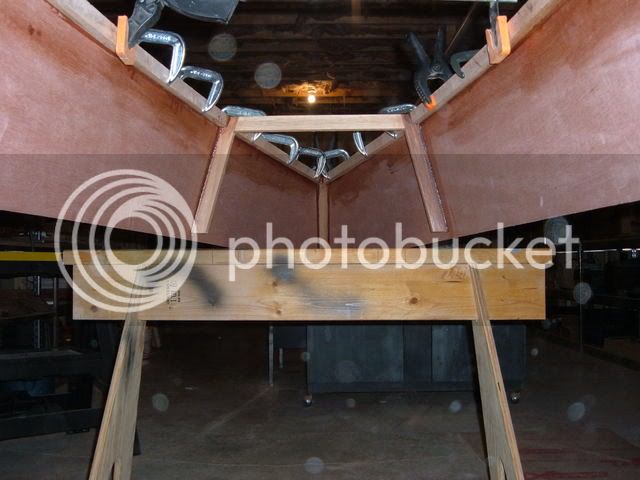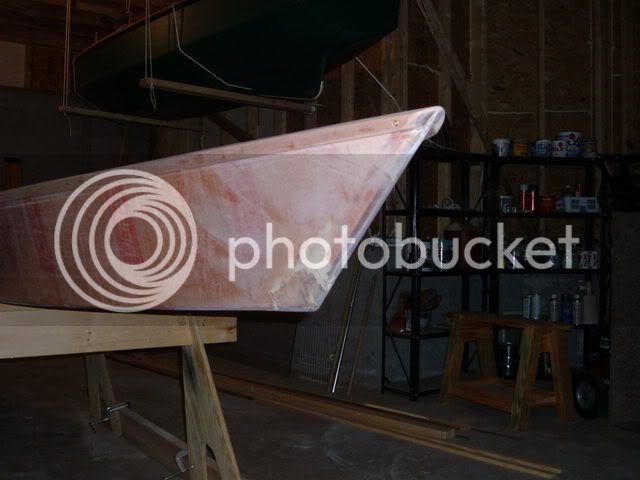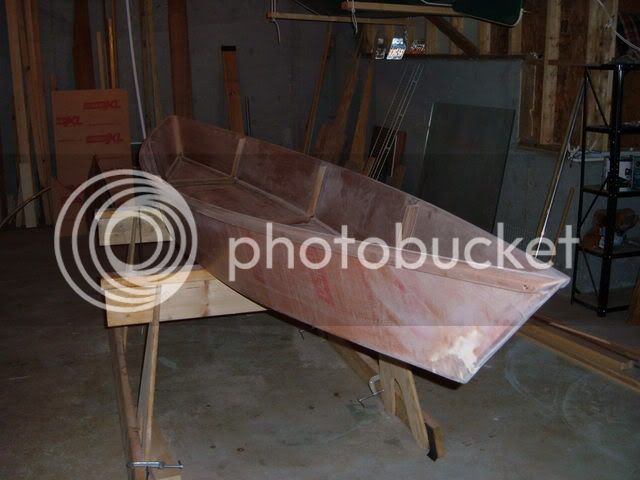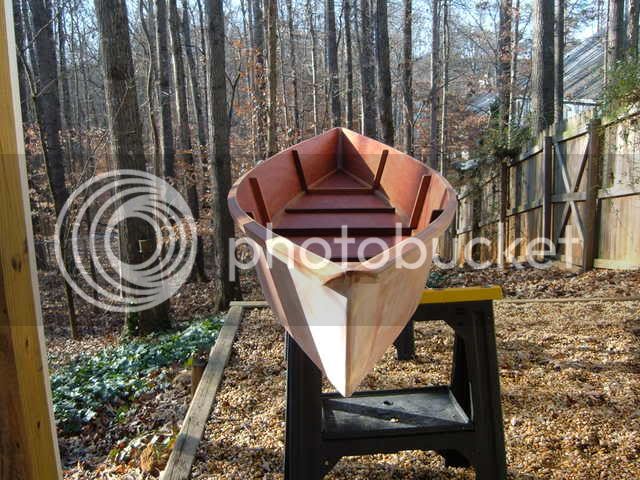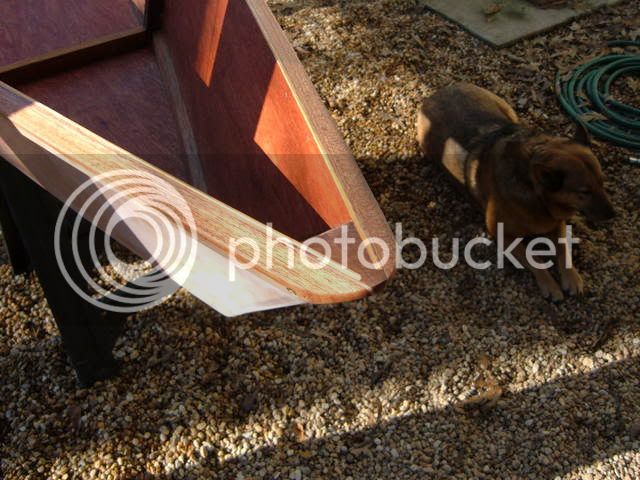Now that I seem to have figured out the Photobucket thing, let's see if I can share some build pics.
Here is an early pic; sides attached to stem, frames installed. This is far and away the easiest boat I've built. That's a blessing, as I am working long hours lately and a multi-chine hull would probably take me a year at the rate I'm going.

Close up of the stem. The stem and ribs are made of mahogany. I collected left over brickmold and such from door and window jobs I worked on. I should have plenty left over to do a canoe seat. The plywood is the underlayment that I've talked about buying at Lowe's.
I used more screws than the plans called for. I wanted to make sure...
[/img]
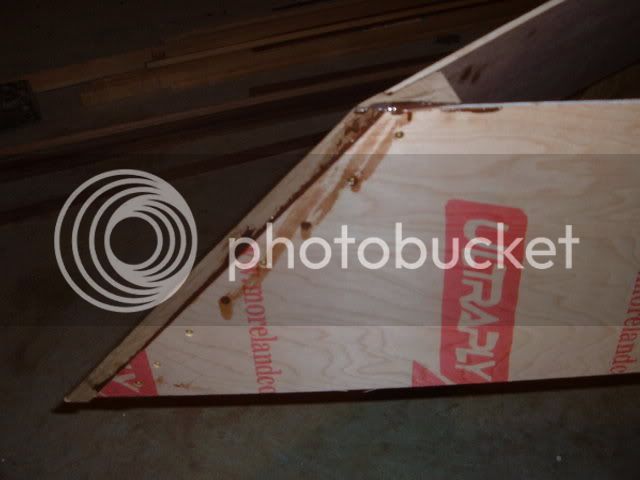
Here is an early pic; sides attached to stem, frames installed. This is far and away the easiest boat I've built. That's a blessing, as I am working long hours lately and a multi-chine hull would probably take me a year at the rate I'm going.

Close up of the stem. The stem and ribs are made of mahogany. I collected left over brickmold and such from door and window jobs I worked on. I should have plenty left over to do a canoe seat. The plywood is the underlayment that I've talked about buying at Lowe's.
I used more screws than the plans called for. I wanted to make sure...
[/img]




